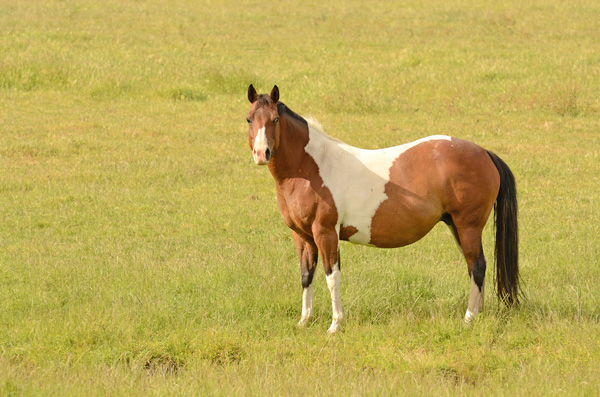
The University of Kentucky College of Agriculture’s Laurie Lawrence, PhD, explains the role selenium plays in equine health and nutrition. This article is courtesy of Equine Disease Quarterly.
Selenium (Se) plays a role in the antioxidant mechanism of the body, and it has also been shown to affect the immune system in many species. Additionally, Se is incorporated into at least 25 different selenoproteins. The synthesis of these selenoproteins depends on the availability of Se within the body. Herbivores rely on plants to meet their Se requirements, while plants obtain Se from the soil. However, soil Se concentration varies geographically, resulting in inconsistent dietary Se intakes across regions in grazing animals.
Areas that tend to be low or marginal in Se include parts of the Eastern United States, New Zealand, Northeastern China, Europe, Egypt and South Africa. Horses kept in low Se areas, or exclusively fed forage and unsupplemented grains produced in low Se areas, may become Se deficient over time.
Central Kentucky is known to be marginal in Se. Therefore, the long-term effects of dietary Se intake on the Se status, immune function and exercise response of the horse was studied at the University of Kentucky in collaboration with the Alltech–UK Nutrigenomics Alliance.
Horses grazing low Se pastures were fed a Se-free supplement for 28 weeks. Then, over the next 28 weeks, a third of these horses was supplemented with 0.3 mg Se/kg dry matter and a third received the same amount of Se, but as sodium selenite. The remaining horses stayed on the unsupplemented diet. Throughout the study a fourth group of horses was given a supplement providing the National Research Council’s recommended Se intake of 1 mg Se/day for a 500 kg horse (approximately 0.1 mg Se/kg dry matter).
The study results demonstrated that the Se status of horses kept in a low Se area, without additional Se supplementation, declined over time. At the end of the initial 28 week depletion, blood Se concentration was 165 ng/mL and glutathione peroxidase (GPx) activity was 43.1 enzymatic units/g hemoglobin (EU/g hb), compared to reference values for horses of adequate Se status of 180- 240 ng Se/mL and 40-160 EU/g hb, respectively. A selenoprotein, GPx is regarded as a hallmark indicator of Se status.
Following Se supplementation, low Se status was corrected within 60 days. In unsupplemented horses, both blood Se and GPx continued to decrease to 125 ng Se/mL and 33.8 EU/g hb, respectively. Immune function assessment of the horses indicated that low Se status was detrimental to the immune system.
Also, following exercise the horses of low Se status experienced a decrease in GPx activity which did not recover within 24 h post-exercise. This decrease occurred even though the exercise was mild, designed with the recreational riding horse in mind. GPx activity increased post-exercise in horses supplemented with Se-yeast, but decreased in the inorganic Se group. Because of its antioxidant role, a decrease in GPx post-exercise could leave horses vulnerable to oxidative stress.
Overall, dietary Se intake should receive special consideration for horses kept in low Se areas, especially if they are kept on pasture with minimal supplementation. Commercial feeds and supplements often contain additional Se, so all feeds (pasture, hay, concentrates and supplements) should be considered when estimating dietary Se. Although Se deficiency may pose risks for horses, Se toxicity can also occur, so over-supplementation should be avoided.


